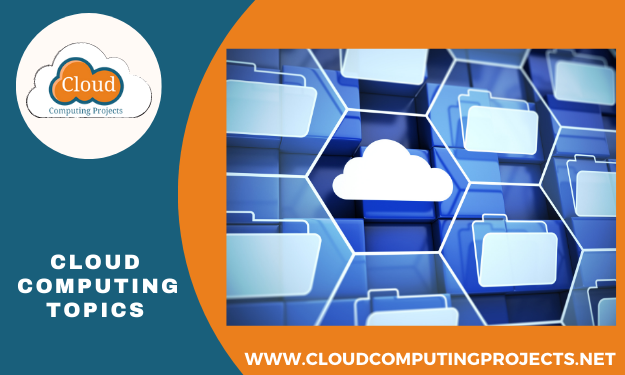Cloud computing is the process of offering resources and services depends the user demand in regardless of location. It is the computing system which classify under of these 3 service models of cloud.
- Platform as a Service (PAAS) – offers a well-established platform for developing the software / application
- Software as a Service (SAAS) – provides a GUI based application for third party access through the internet
- Infrastructure as a Service (IAAS) – affords the cloud-oriented service / infrastructure includes networking, virtualization and storage
As you know already, the cloud computing has in-build unique features to support revolutionary technological advancement in the modern society. Here, we have given the characteristics based on three major aspects as follows,
Key Features of Cloud Computing
- Device Independence
- Here, the user not tied up with the network and present applications accompany with the users by the cloud.
- Mobility and Flexibility
- Support fast deployment of pay-as-you-go model
- No need to care about installation updates
- User can access the service or resource from any location
- More Capacity
- Improves the user’s capacity more than the standard local host
- Support huge volume of processing power and storage
When dealing with cloud computing, it is must to be ware with the different varieties of cloud deployments. For any cloud developments, the environment is based on the any of the following type.
Types of Cloud Deployments
- Private Cloud
- Recommended for Stand-alone Organization / Institution
- Useful for Business People with Control Norms
- Public Cloud
- Large-capacity of Storage Space with Scalability Provision
- Useful for Software Project and other Developments
- Community Cloud
- Multi-Tenant and Cooperative Platform
- Useful to Industrialists to Share Data within Organization
- Hybrid Cloud
- Combing two different platforms as Public with Private
- Suggested for enterprise to handle Big Data with Standard Privacy Norms
So far, we have debated the cloud service, service types and its supporting features. Now, we can see about the how the task is scheduled in cloud system. In this, the scheduling process takes place in following three phases. Scheduling in cloud can be generalized into three phases namely:
- Task Allocation: Task is surrender to targeted resource
- Resource Discovering And Filtering: Data Center Broker find out all available resources in the network with their current status information
- Resource Selection: Decide on target resource depends on specific task metrics
Then, we are going to talk over about the most frequently asked cloud computing questions in google with the agreeing solutions. Since, it gives new dimension in creating novel Cloud Computing Topics.
FAQs in Cloud Computing
- RQ: By what method the data storages are scale up in cloud servers?
- Solution: Use VM migration, load balancing or scheduling schemes to assign the tasks to the particular servers. It reduces the storage overhead and also uses the resources appropriately. Due to the optimization of storage servers, it can be scale and flexible well for the large volume of tasks.
- RQ: In what way, the cloud is converted to secure and trustworthy?
- Solution: Use blockchain or cryptography mechanisms for ensuring the security and privacy for both users, and cloud service providers. Application layer security is the crucial need for the current cloud applications and services.
- RQ: In what manner, the heterogeneous cloud is designed to support different types of tasks?
- Solution: Today, tasks from the users are heterogeneous (Video, Voice or multimedia applications) and the requirements of each task are different with respect to the QoS (response time, latency and resources). Optimally choose the service provider for the corresponding task.
- RQ: Exactly how to achieve Energy-Aware Task Scheduling and Distribution?
- Solution: At first, select the most apt approach to do each task depend on end-user or service provider request. Then, assign the resources to tasks by priority.
- RQ: How to assign appropriate resources for cloud based non-sensitive and sensitive tasks?
- Solution: CPU, memory and network bandwidth usage is estimated for task and sensitive tasks are allocated by the resources and then non-sensitive tasks are assigned using appropriate method. Due to the estimation of accurate amount of resources for the required task, applications are executed without any error.
In addition, we have given the new future direction of the cloud computing. These are handpicked by our experts after the thorough research of current advancement in cloud computing.
What is the Next in cloud?
- Cloud Computing Vendors
- Virtualization and Containers
- Server less and Microservices
- Software Define Network and Storage
- Migration of Internal Service and Private Cloud
- Private Cloud Operation and Administration
- Container Orchestration and Container as a Service
- New Technologies for IaaS based Cloud Computing and Network Security
- And other Upcoming Public Cloud Project
When working on cloud computing projects, make sure that the following things are answered in the selected research topic. Since, these aspects give the add-on score in your research work.
Research Issues in Cloud Computing
- How to address the heterogeneity of mixed clouds?
- How to incorporate multiple clouds to increase scalability
- How to model high persistent and performance caching approaches?
- How cache overcome the trustworthiness issues and enhance the performance
Just to let you know, we have given the top-demanding Cloud Computing Topics. These topics are suitable for all active cloud computing scholars as well as final year candidates. And, it is classified into 5 different categorizes for your ease.
Cloud computing project topics for final year
- Cloud Service Topics
- Cloud Service Composition
- Business Process Management
- Cloud Federation and Interoperability
- Adaptive and also Dynamic Services
- Service Life Cycles and also Service Governance
- Cloud and Service Engineering
- Service Privacy and also Security
- Building Service based Applications
- Self-Organizing Service Architectures
- Social and Business Aspects of cloud
- Crowd and Social based Cloud
- Cloud and also in Service Business Models
- Cloud Computing Technologies
- RESTful Services and also clouds
- Microservices Management and also Deployment
- Trends in Computation, Storage and also in Network Clouds
- Next Gen Service Repositories
- Track on Internet of Things
- Real-Time and Embedded Services
- Fog to Multi Cloud Services
- Cloud to Fog Computing Solutions
- Mobile Services and also Clouds
- Cloud Computing
- PaaS and IaaS Cloud Services
- Industry Clouds: Rapidly Growing Segments
- Internet of Things and Artificial Intelligence
- Hyper-scale Providers also on Cloud
- Hybrid Cloud Platform and Services
- Data Center Proliferation
- Hardened/ Trusted/ Shield VMs
Cloud Computing Tools and Simulators
Now, shall we see about the implementation tools for cloud computing. Normal tools addresses the user demands based on resource features (storage size, processing ability in MIPs, deadlines). Further, advance tools analyze the task interdependence for real-world cloud communication.
In overall, Cloud simulation tools measures the performance and readiness of critical cloud system. In addition, it monitors, handles and assesses the applications, infrastructure, architecture and services. Below, we have suggested some important cloud monitoring tools,
- New Relic
- Logic Monitor
- AppDynamics
- Amazon CloudWatch
- Microsoft Cloud Monitoring
Moreover, cloud computing is incorporated with several advantages to assist both clients and hosts. And, it is easy to access, upload, download the info in very low time.
- Serverless
- Internet of Things
- Fog / Edge Computing
- Green computing (Green cloud)
Before get into the cloud oriented research work, one should know the fundamental theories of Cloud computing. By referring the good textbook materials, one can strong build their technical skills. Also, the following things are very essential for active scholars to create a successful cloud system.
How to be Successful in the Cloud?
- DevOps
- Software Defined Storage and Network
- Various Container Solutions (rkt, docket and more)
- Cloud based Applications Logging, Monitoring and Debugging
- Cloud CI/CD Services (Continuous Integration and Developments)
- Primary cloud offering models (private, public and hybrid) and services (SaaS, IaaS and PasS)
At the end of development phase, it is required to analysis the overall system perform to bring out the original worth of the selected research topic. Through, one can prove that their selected topic is better than other existing ones. Most importantly, it should meet the user QoS in all aspects.
Performance Analysis in Cloud Computing
Quality of Service
- Measure the network overall performance and services
- Parameters: bit rate, jitter, latency, availability, packet loss and throughput
- Has varied priority based on users, applications and data flow. For instance: telecommunication – resource advance booking and traffic ranking using Voice over IP technology
Qualities of Traffic
Here, QoS factor is varied based on the human and technical factors. In some cases, the network may miss to drop some packets because of network traffic.
- Human factors – service availability, stability, quality, waiting times and user data
- Technical factors – scalability, reliability, maintainability, effectiveness and network jamming
Due to unpredictable user load the QoS metric may vary to assess the performance. Here, we have given some common parameters that being used in developing Cloud Computing Topics.
- User (click rates, page views, etc.)
- Throughput (http, cables, network, etc.)
- Performance (response time, queries/sec, cpu, etc.)
- Availability (link breaks, uptime, service and host failure, etc.)
- Resource Utilization (disk, bandwidth, database tables, memory, etc.)
- Performance Indicators (no. of. users, revenue / hour and cost / transaction, etc.)







